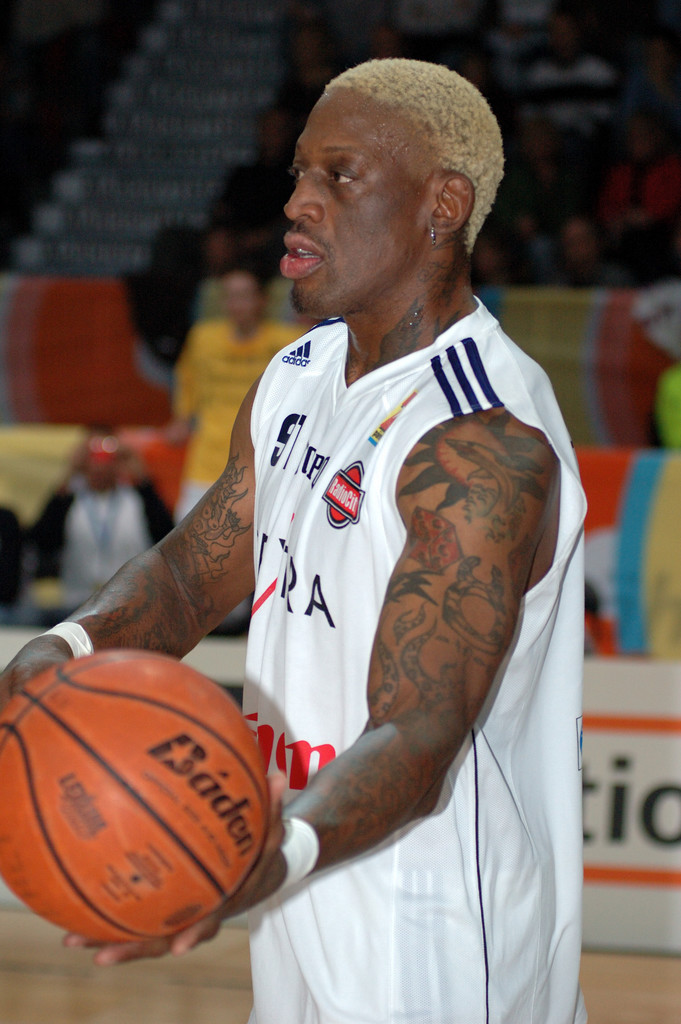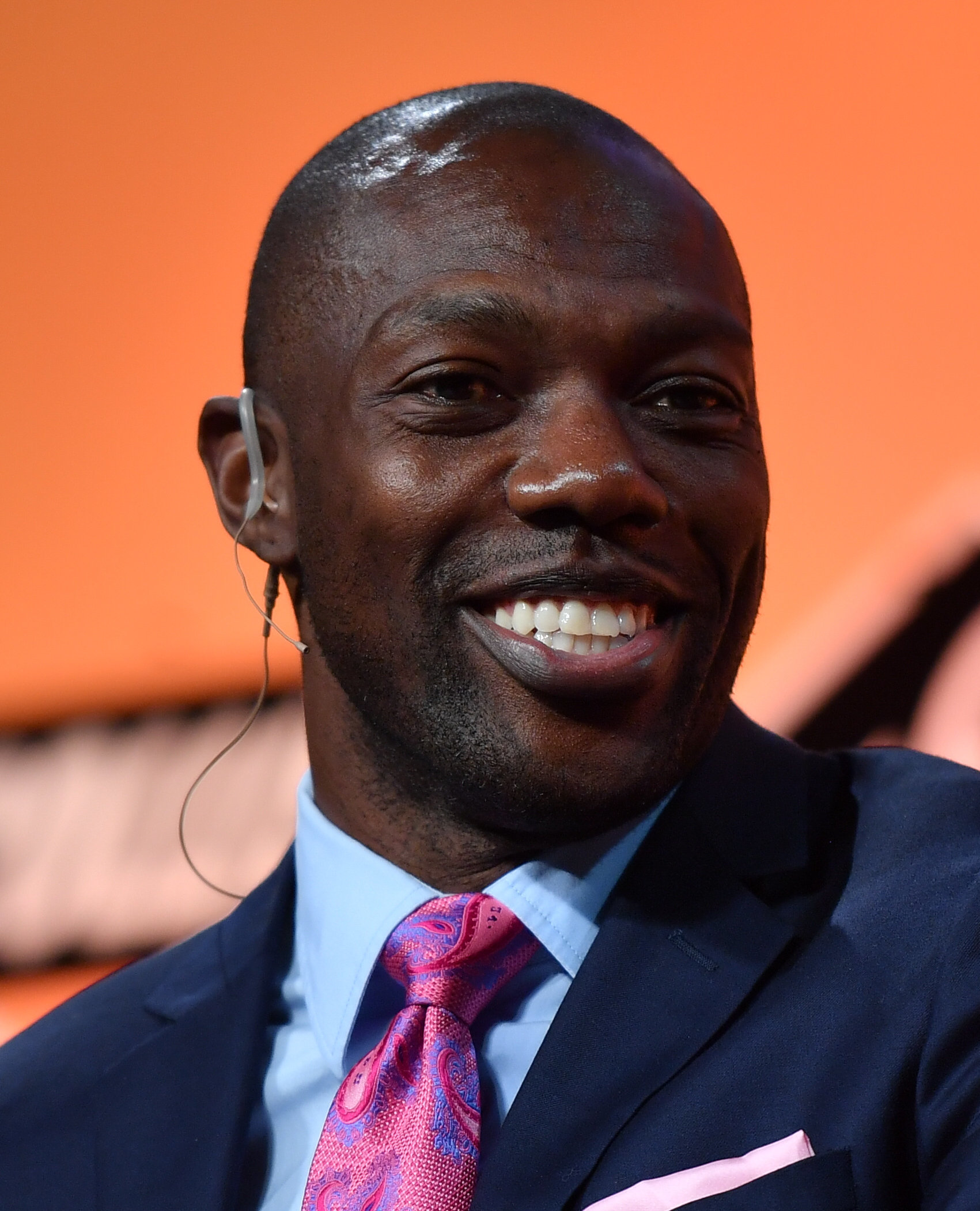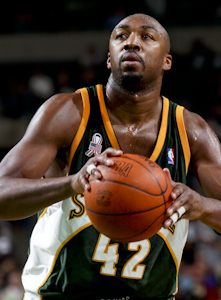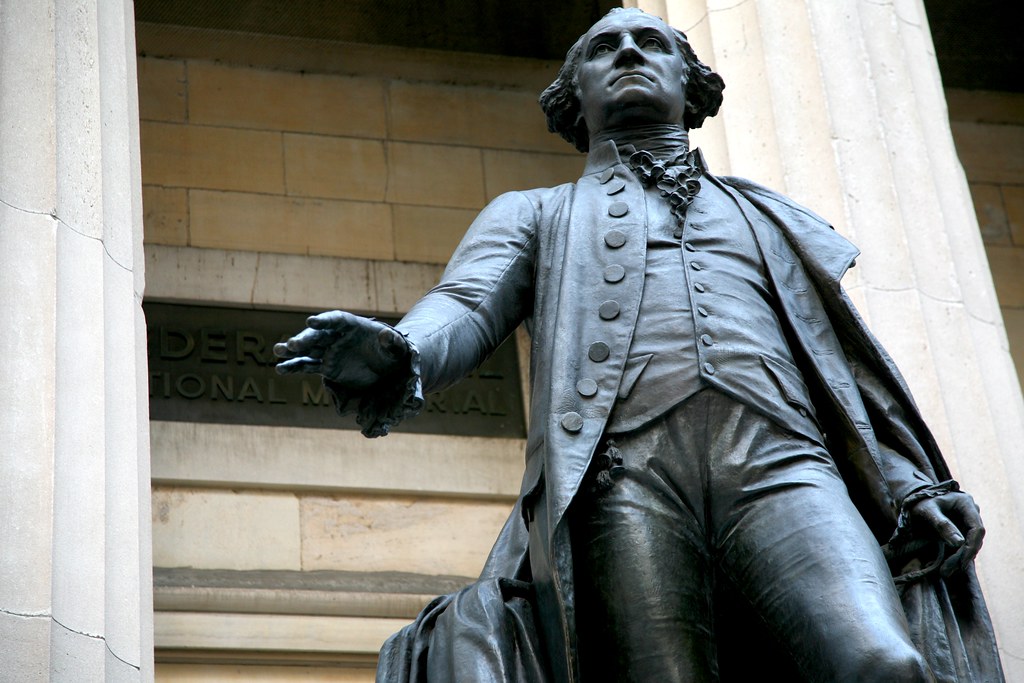
You know them, you love them, and you probably cheered for them on the biggest stages in sports. Professional athletes often live lives that seem beyond our wildest dreams – multimillion-dollar contracts, lavish lifestyles, and the adoration of millions. But behind the dazzling headlines and championship rings, there’s a darker, often unseen reality: financial turmoil.
It’s a tale as old as time, or at least as old as professional sports: immense earnings, followed by devastating losses. Many athletes, despite earning sums most of us can only fantasize about, find themselves grappling with a toxic cocktail of poor financial literacy, extravagant spending habits, and unfortunately, misplaced trust in advisors. The sheer volume of money, combined with a sudden lack of experience in managing it, creates a perfect storm for disaster.
Take Terrell Davis, the NFL great, for example. He recently shared a horror story about being misled and swindled by an adviser, who was recommended by a friend, mismanaging his accounts and losing him a lot of money early in his career. His story, sadly, is not uncommon. Many athletes come from backgrounds where they’ve never had to manage such colossal sums, making them vulnerable to flashy lifestyles, risky investments, and even unethical advisors. The unpredictable nature of sports careers, coupled with the pressure to maintain a certain image, often pushes them towards reckless spending, leaving them exposed to financial collapse once their playing days are over. For some, it’s not just a hiccup in their investment portfolio, but a total financial ruin. Let’s dive into some of the most startling examples of professional athletes who experienced misfortune after reaching the pinnacle of their careers.

1. **Lawrence Taylor**: The NFL Legend’s Expensive HabitsLawrence Taylor, a name synonymous with defensive greatness in the NFL, earned an astonishing approximately $50 million throughout his illustrious career. That’s a staggering sum, one that most people would assume guarantees a comfortable, if not opulent, life far beyond retirement. Yet, even for an icon like Taylor, wealth can be incredibly fleeting when met with a lifestyle that burns through it faster than a touchdown sprint.
His financial downfall wasn’t due to a single bad investment, but rather a perfect storm of personal indulgence and poor choices. Taylor admitted to Bola VIP that he spent an eye-watering $1,000 a day on drugs and escorts for personal indulgence. Imagine that: a thousand dollars, every single day, just to fuel a destructive lifestyle. This kind of expenditure alone could decimate even the largest fortunes, leaving little room for sound financial planning or long-term security.
Compounding these extravagant and harmful habits were a myriad of legal and tax troubles. These issues often arise as a direct consequence of unchecked spending and a lack of proper financial oversight, further eroding any remaining wealth. Ultimately, this combination of heavy drug use, excessive partying, ill-advised business ventures, and the relentless pressure of legal and tax battles pushed the Hall of Famer into the crushing reality of bankruptcy. Taylor’s story is a profound and stark warning, reminding professional athletes that the perils of mismanaging wealth extend far beyond the playing field, affecting every aspect of their lives.
Read more about: Shannen Doherty, Star of ‘90210’ and ‘Charmed,’ Dies at 53: A Look Back at a Life Marked by Resilience, Stardom, and Unyielding Spirit

2. **Delonte West**: A Heartbreaking Battle Beyond the CourtDelonte West’s story is a particularly poignant reminder that financial struggles are often deeply intertwined with personal battles, especially those concerning mental health. A former NBA star, West earned millions during his nine-season career, including a significant three-year, $12.7 million deal with the Cleveland Cavaliers in 2008. These were the kinds of contracts that promised generational wealth and security.
However, things began to change, and not just for his investment portfolio. His peers, teammates, agents, family members, and even fans started noticing unsettling shifts. Due to his struggles with mental health issues, addiction, and severe financial mismanagement, West tragically lost his entire career’s earnings, which totaled $16 million. This isn’t just about losing money; it’s about a complete unraveling of a life that once shone brightly on the national stage.
The heartbreaking reality of his situation became shockingly public when some of his former teammates revealed that he was unsheltered and living outside of a 7-Eleven, as reported by The New York Times. The raw tweet from @TheAthletic vividly captured the despair: “The last time teammates heard from former NBA player Delonte West, he was living outside of a 7-11. People, with means and contacts, have tried to help. Save him, really. Except they can’t buy their way to a solution. Not with this.” This highlights the complex nature of his challenges, where money alone couldn’t fix deeper issues.
In a display of profound compassion, former Mavericks owner Mark Cuban tried to intervene in 2020 after discovering West begging for money on the streets of Dallas. Cuban not only went to get him but also paid for him to go to rehab and secured him housing, offering a glimmer of hope. Tragically, West later left Texas and returned to the streets, underscoring the enduring and complex nature of his struggles. Even Shaquille O’Neal, another NBA legend, expressed how West’s story brought him to tears, illustrating the deep impact and sorrow felt across the basketball community for his devastating financial and personal plight.

3. **Adrian Peterson**: The Gridiron Great’s Debt TrapAdrian Peterson, an absolute powerhouse of an NFL running back, carved out a career earning around $100 million. That’s a truly astronomical figure, cementing his place not just in football history but also among the financially elite. Yet, even with such colossal earnings, Peterson found himself mired in intense financial struggles. His predicament wasn’t a result of a single, massive gamble, but rather a slow erosion caused by poor money management and a barrage of multiple lawsuits tied to unpaid debts. It illustrates how even a seemingly endless stream of income can vanish without diligent oversight.
A particularly glaring misstep in his financial journey came in 2016. Peterson took out a $5.2 million business loan, not to fund a new venture, but alarmingly, to pay off other lenders. As reported by The Washington Post, this move was a clear red flag, signaling deeper and more systemic financial issues at play. It’s a classic sign of a debt spiral, where new debt is taken on simply to service existing obligations, often leading to an even more precarious financial position.
The repercussions of these issues continued to haunt him years later. In 2024, a Texas judge ordered him to turn over personal assets, a drastic measure designed to help settle a debt that had unfortunately ballooned to over $12 million, according to CBS News. This serves as a stark reminder that neglecting financial discipline and allowing debts to accumulate can have long-lasting and severe consequences, even for those who once commanded nine-figure salaries. Peterson’s journey emphasizes the critical importance of proactive financial literacy and responsible debt management, no matter how much money flows into your bank account.
Read more about: Vikings Coaching Staff Navigates Uncharted Waters: Leaves of Absence and Defensive Resurgence Amidst Player Stardom

4. **Curt Schilling**: A Strikeout in the Video Game WorldCurt Schilling, a dominant pitcher throughout his 20-year MLB career, accumulated more than $115 million in earnings. This substantial fortune should have provided a comfortable, worry-free retirement. Yet, astonishingly, Schilling managed to lose it all within just three years of leaving professional baseball, according to SportsCasting. His financial downfall wasn’t the typical narrative of lavish spending or reckless gambling, which often plague athletes. Instead, it was a colossal misstep into the notoriously volatile world of business: the video game industry.
In 2006, Schilling founded 38 Studios with an ambitious vision: to create a major gaming company. He poured $50 million of his own hard-earned money into the venture, a testament to his belief in its potential. To further fuel his dream, he secured a hefty $75 million loan from the state of Rhode Island, alongside attracting other investors who contributed an additional $5 to $10 million. It was a massive undertaking, backed by significant capital and public expectation, all centered around his post-baseball passion.
Despite the immense investment and high hopes, it took six long years for 38 Studios to release its first game, “Kingdoms of Amalur: Reckoning.” While the game did receive positive reviews, critical acclaim alone wasn’t enough to sustain such a heavily invested and slow-to-launch enterprise. Just a few short months after its release, 38 Studios, unfortunately, went bankrupt. The dream collapsed, taking with it Schilling’s personal fortune and leaving him unable to repay the substantial loans. This saga is a powerful cautionary tale about the inherent risks of even seemingly promising business ventures, especially when personal wealth is tied so directly to their success, proving that passion alone cannot guarantee financial viability.
Continuing our in-depth examination, we now turn to more high-profile athletes who, despite reaching the pinnacle of their sports, tragically lost their fortunes. Their battles with mismanagement, misguided advice, and the heavy cost of a lavish lifestyle offer crucial lessons for anyone navigating sudden wealth and the pressures of public life. These stories serve as powerful reminders that financial acumen is just as vital as athletic prowess.
Read more about: From Subprime Cars to Social Media Scandals: The Controversial Ventures and Failed Empires of High-Profile Personalities

5. **Dennis Rodman**: The Rebound King’s Extravagant DownfallDennis Rodman, the inimitable NBA Hall of Famer, etched his name in history as a formidable force on the Chicago Bulls, playing a crucial role in securing three consecutive NBA championships alongside Michael Jordan in the late 1990s. Beyond his undeniable talent and relentless rebounding on the court, Rodman cultivated an extravagant persona that often saw him flaunting his wealth in ways that, as Yahoo! Sports astutely reported, ultimately led to his own chagrin. His larger-than-life image, while entertaining, proved to be a double-edged sword when it came to his finances.
Despite accumulating over $27 million in salary alone during his storied NBA career, Rodman unfortunately found himself losing much of this significant fortune. His financial unraveling was a complex weave of various factors, including an undeniably lavish spending habit that seemed to know no bounds, persistent legal issues that drained his resources, impulsive gambling losses, and a striking lack of proper financial management. It’s a classic example of how even a colossal income can rapidly dissipate without a robust and disciplined financial strategy in place.
Rodman’s well-documented “Rock & Roll headlines” and consistently wild antics, which plastered tabloids and captivated public attention for decades, unfortunately went hand-in-hand with persistent and severe financial struggles. These challenges continued long after his celebrated basketball career had drawn to a close, illustrating a profound connection between his high-flying lifestyle and his economic woes. His journey stands as a vivid, enduring illustration of how an unchecked, flamboyant existence can relentlessly erode even the most substantial fortunes, leaving a lengthy trail of financial hardship that lingers for years.
For many, his story is a cautionary tale, demonstrating that charisma and athletic greatness do not automatically translate into financial stability. The ongoing saga of his financial challenges serves as a stark reminder that the pressures of maintaining a celebrity image, coupled with a lack of practical money skills, can lead to devastating consequences, long after the bright lights of the stadium have faded.
Read more about: Hollywood’s Infamous Landmines: 14 Films That Absolutely Decimated A-List Careers

6. **Vince Young**: From Gridiron Glory to Economic RuinNFL quarterback Vince Young burst onto the scene with immense promise, signing contracts that collectively brought him more than $35 million throughout his professional career, most notably a colossal $26 million deal with the Tennessee Titans. These were truly life-changing sums, offering the prospect of generational wealth and a secure future. However, despite this incredible financial foundation, Young’s post-playing life took a deeply troubling turn, leading to significant economic distress.
According to an in-depth report by Sports Illustrated, Young’s predicament was largely due to a combination of alarmingly poor financial decisions, unrestrained excessive spending that quickly outpaced even his massive income, and the unfortunate consequence of relying on inadequate financial advice. These factors collectively paved a precarious path for the young star, highlighting how vulnerable athletes can be without experienced and trustworthy guidance.
The speed of his financial decline was particularly shocking: just seven years after securing his career-defining, biggest contract, Young was compelled to file for bankruptcy in 2014. This rapid descent from peak earnings to severe insolvency serves as a powerful and disheartening demonstration of just how quickly immense fortunes can unravel without diligent oversight, sound judgment, and a clear understanding of wealth management.
One incident that truly became a hallmark of his extravagant spending habits involved Young reportedly expending an astonishing $15,000 during a single outing at The Cheesecake Factory. While he openly acknowledged the undeniable lavishness of such spending, he did, however, vehemently deny other persistent and widely circulated rumors, such as the claim that he once bought out an entire Southwest Airlines flight simply to avoid the inconvenience of sitting next to other passengers. These vivid anecdotes undeniably paint a stark picture of the sheer scale of his financial carelessness and the lack of discretion that contributed to his downfall.
In a commendable effort to turn his life around, Vince Young has since admirably shifted his focus. He is now actively dedicated to rebuilding his personal and financial stability, emphasizing the critical importance of financial literacy, and passionately mentoring young athletes. His hope is to guide them away from the very same pitfalls and misjudgments that ultimately led to his own devastating financial collapse, transforming his personal hardship into a potent and invaluable lesson for the next generation of sports stars.
Read more about: Rev Up Your Engines: A Definitive Ride Through the 14 Most Iconic Motorcycles of All Time

7. **Terrell Owens**: The Flashy Receiver’s Fiscal FumblesTerrell Owens, renowned as an electrifying wide receiver, rightfully earned his place in the Pro Football Hall of Fame in 2018, celebrating an illustrious career where he amassed an astounding over $80 million with iconic teams such as the San Francisco 49ers, Philadelphia Eagles, and Dallas Cowboys. Throughout the 1990s, 2000s, and 2010s, he was undeniably one of the league’s most compelling figures, known not only for his breathtaking skills on the football field but also for his often controversial and brash demeanor, which famously included highly publicized arguments with teammates and even passionate fans.
Regrettably, those very same flashy ways and an unbridled appetite for spending money ultimately conspired to lead him down a path of significant financial ruin. By 2012, a mere few years after reaching the zenith of his highest earning seasons, Owens had shockingly lost nearly all of his colossal fortune, a devastating revelation meticulously detailed in an article published by GQ. This serves as a potent testament to how even the most prodigious incomes, capable of sustaining multiple lifetimes, can rapidly evaporate when unchecked spending becomes a deeply entrenched and unsustainable norm, proving conclusively that superstar status does not, in fact, grant immunity from harsh economic realities.
Owens’ story is a complex tapestry woven with elements of poor investments, numerous lawsuits, and a lifestyle that simply outpaced even his substantial income. The sheer volume of money passing through his hands, combined with a lack of stringent financial discipline, created a perfect storm for disaster, leaving him in a precarious position despite his incredible on-field success. It’s a powerful illustration of how external pressures and internal habits can conspire against long-term financial stability.
Today, Terrell Owens has undergone a profound transformation in his personal perspective and now actively shares invaluable advice gleaned from his often painful and publicly scrutinized experiences. He is frequently quoted, offering a straightforward yet deeply impactful message to “any fan or athlete out there: Just don’t live beyond your means,” as reported by CNBC. This profoundly simple yet incredibly powerful guidance, originating from someone who personally navigated the dizzying heights of immense wealth and the crushing depths of financial loss, carries immeasurable weight and serves as a critical, enduring reminder for anyone fortunate enough to handle significant income, regardless of their profession.
Read more about: Unpunished Genius: The 12 Athletes Who Broke the Rules, Got Away With It, and Forever Changed Their Sports

8. **Vin Baker**: The $100 Million Fall from GraceVin Baker’s personal journey stands as yet another profoundly sobering and deeply unsettling example of just how rapidly an apparently insurmountable fortune can dissipate into thin air. Once heralded as “America’s Best Kept Secret” by Sports Illustrated during his impressive collegiate years, Baker went on to carve out a distinguished 13-season career in the NBA, during which he earned an astonishing $100 million. This monumental sum of money should have unequivocally secured a life of luxurious retirement and enduring financial security for him and his family. Yet, widespread and disheartening reports eventually revealed a starkly different and deeply unfortunate reality: Baker was, in fact, broke, and had resorted to training for a managerial position at a Starbucks franchise located in Rhode Island.
At first glance, the swift and dramatic depletion of such a colossal fortune, occurring within a mere 10 years into his retirement from the demanding world of professional basketball, seems utterly incomprehensible to most. It represents a situation that fundamentally challenges the very notion of inherent financial security, powerfully demonstrating that immense wealth, by itself, is far from an impenetrable shield against the corrosive forces of personal and financial hardship. Baker’s deeply personal and widely publicized story vividly underscores the powerful, and often destructive, interplay between personal struggles, a lack of sound financial acumen, and a series of poor money management decisions.
What makes Baker’s situation even more poignant is its disturbingly common nature within the professional sports landscape. A seminal 2009 Sports Illustrated article brought to light the alarming statistic that a staggering 78% of former NFL players find themselves confronting bankruptcy or grappling with severe financial stress within a mere two years of retiring from the league. That very same report also indicated an equally concerning trend for basketball players, suggesting that an estimated 60% of NBA retirees were going broke within five years of stepping off the court for the last time. These stark figures collectively painted a grim and widespread picture of pervasive financial instability within the highly lucrative, yet ultimately precarious, athletic community.
It is important to note that while these specific figures from Sports Illustrated created a significant stir, the NBA union later offered a slightly different perspective, suggesting that the initial percentages were “overblown and pulled out of thin air.” Their internal surveys, while acknowledging significant financial challenges, pointed to a figure of only 6% to 8% of players losing huge amounts of money or struggling to make ends meet within 10 years of retiring. However, regardless of the exact statistical discrepancies, the underlying, undeniable truth remains steadfast: there is a clear and universal acknowledgment that the financial well-being of professional athletes, encompassing both those actively competing and those in retirement, stands as a source of serious and ongoing concern, urgently demanding thoughtful attention and proactive, effective solutions.
Read more about: A Delicious Blast from the Past: Discontinued Childhood Foods We Seriously Miss (and Still Dream About)
The experiences of these athletes, spanning the high-stakes world of the gridiron to the electrifying hardwood courts, are far more than mere cautionary tales; they represent powerful, real-life lessons in the profound importance of financial literacy, personal responsibility, and the insidious perils of unchecked indulgence. What truly binds these diverse stories together, beyond the sheer, staggering scale of fortunes lost, is the urgent and undeniable need for comprehensive financial guidance and robust, accessible support systems specifically designed for young athletes as they make their highly anticipated entry into the professional arena. It’s a stark, compelling reminder that while the exhilarating roar of the crowd and the fleeting thrill of victory are temporary glories, sound and prudent financial decisions form the unwavering foundation of a stable, secure, and prosperous future, one that extends long, long after the final whistle has emphatically blown. Ultimately, these poignant stories are not simply about money that was earned and then irrevocably lost; they are profoundly about lives that were indelibly impacted and the immense, enduring importance of making informed, strategic choices that actively protect and safeguard the very future so many tirelessly dream of achieving.



